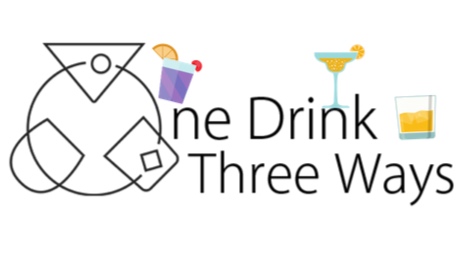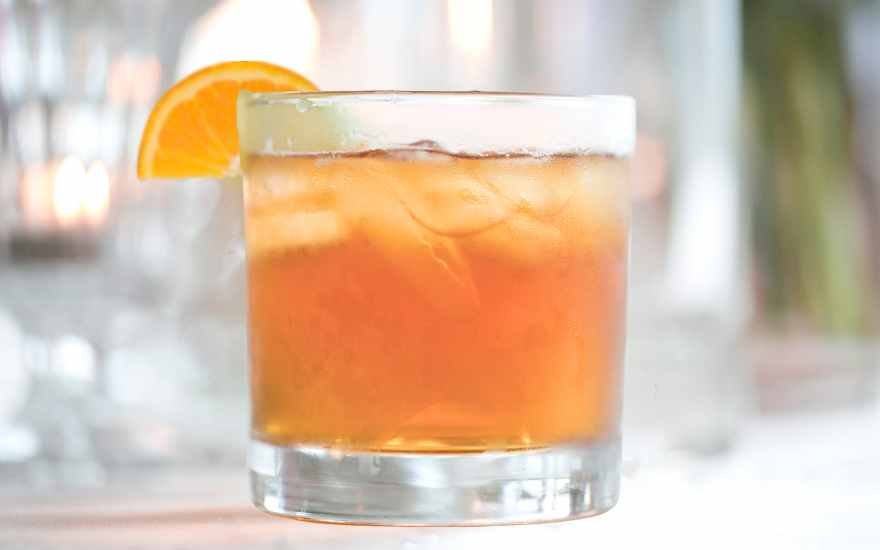Slovenia is a country that seems to have it all as a holiday destination – lots of open green spaces, beaches, stunning lakes, mountains and a burgeoning food and drink scene. In fact, in 2021, Slovenia held the title of the European Region of Gastronomy and presently has ten Michelin starred restaurants! Slovenia is certainly on the tourist route as discerning travellers seek more unique locations to visit and experiences to have. Part of that experience will also, no doubt, involve discovering Slovenian wines. It may therefore be surprising to learn that the first records of wine being produced in Slovenia preceded the arrival of the Romans and date back to the 4th Century BC!
Interestingly, despite being less well known, Slovenian wines do feature highly in the rankings of international wine league tables! There was also the inaugural Central and Eastern Europe Wine Fair which took place in London, UK in June 2024, which introduced many to the world of Slovenian wines. Still, Slovenian wines remain under the radar compared to their Italian neighbours and are therefore ripe for discovery by all! Slovenia may still be considered to be off the beaten track within the wine world but has many similar climates to Italy and therefore has similar grape varieties. You might also wish to join in the annual celebrations of Slovenian wine on St Martin’s Day each 11th November.
These days, it may not be necessary just to take a trip to Slovenia to sample its wines as some of these wines can be purchased internationally (from supermarkets such as Waitrose or Majestic), although we would never discourage you from travelling to this captivating country with its diverse landscapes and good food! Plus, you can also discover vineyard cottages and the world’s oldest vine in Slovenia – have you heard about this before? We will dive into these aspects a bit later!
Slovenia’s vineyards occupy an enviable position as they are in the centre of the European wine growing zone and this is also a category allocated to the location of Burgundy in France, amongst others. Having diverse soils and climates does mean that Slovenia’s location is attractive and there are at least 52 differing wine varieties available from over 2500 wine producers for both red and white wines! We can’t wait to delve a bit further in to these fascinating Slovenian wine regions…
Where are the Slovenian wine regions?
There are three main wine growing regions in Slovenia, which are divided further into nine wine growing districts. The three regions are: Primorska, Podravje and Posajve – let’s discover more!
The Primorska Wine Region
Primorska is known as the warmest wine growing region in Slovenia. This is where the Brda region is located and it is an area that is influenced by both Mediterranean and Alpine conditions. It is a diverse region renowned for having strong, dry wines and has four wine growing districts with their own distinct personalities. You can find high quality red and white wines produced in this region as well as popular orange wines. Primorska is the region in which many award winning Slovenian wines and wineries are based.
Its four sub-districts are Vipava Valley, Brda, The Karst and Slovenian Istria and you could certainly follow a wine route to each of those destinations! Typical Slovenian grape varieties to be found in this region include: Rebula, Malvazija, Refošk, Pinela and Teran. The most dynamic wine growing district in Slovenia is stated to be Vipava Valley and Slovenian Istria is the most sunlit district located between Italy and Croatia, which will give you an idea of the levels of diversity in the region!
Brda is located between the Alps and the Mediterranean and mainly produces full bodied white wine styles based on Chardonnay and Rebula. You can also find full bodied red wines which can be based on Merlot, Cabernet Sauvignon or Rebula. Surprisingly within Brda, there are also sparkling wines produced, despite its warmer climate!
Vipava Valley is a location that attracts adventurous winemakers and it is gaining a new and authentic image around the world. The Valley embraces both a cool and warm climate with Merlot and Sauvignon Blanc being the widespread varieties. However, there is also Zélen to be found which is unique to the Vipaza Valley and has an aromatic and spicy flavour profile.
Karst is the smallest wine district in Primorska and is home to red soils which are rich in iron oxides! The Karst district’s climate tends to be a mixture of both continental and Sub-Mediterranean. The most popular wine from this region seems to be Teran, which is made out of Refošk’s red variety. For the white varieties, the ones that receive notable mentions tend to be Istrian Malvasia (aka Malvazija) and the indigenous grape variety Vitovska Grganja.
Slovenian Istria, this is the most sunlit of the Slovenian wine growing regions (we wouldn’t blame you for wanting to visit just on this basis!) and it is positioned between Italy and Croatia by the Adriatic Sea. The main red variety in this district tends to be Refosco (aka Refošk), which is a grape variety that can be found in more than 45% of all of the vineyards. Other red grape varieties for the region include some of those international varieties that we already know such as Cabernet Sauvignon, Merlot and Syrah. As for the white varieties, the most popular in this region is Istrian Malvasia which tends to be planted in more than 30% of vineyards. A fun fact is that Istria is also the district renowned for truffles!
Podravje Region
Podravje is the region that contains the beautiful Lake Bled and whilst there you should sample its must have cream cake! This is the largest growing wine region in Slovenia and it is further divided in to two districts. Did you know that the vines from this region have been growing since the Roman times?
You can find high quality wines that are recognised on the international stage which use both international and indigenous grapes! Maribor is also the location of a 450 year old grapevine and the oldest winery in Slovenia is in Ptuj, both are within this Podravje region. The typical wines for this region include Blue Franconian (aka Blaufränkisch), Furmint and Italian Riesling.
Let’s find out more about the two wine districts – Stajerska Slovenija and Prekmurje – within the Podravje region.
Prekmurje is a district that is home to storks, thermal water springs and long and large plains but it is also the second smallest wine growing region within Slovenia. Typically, the wines from this district will be full bodied but the main varieties tend to be white. However, Blaufränkisch seems to be going against the grain, so to speak, and has become a popular Slovenian red wine option.
Stajerska Slovenija is the largest Slovenian wine growing district! This will be the district that many travellers visit as the capital city Ljubljana is located there as well as towns such as Piran, Bled and Maribor. Apparently in Ptuj, the oldest preserved Slovenian wine bottle can be found – the Golden Vine is from 1917!
It is also possible to see sparkling wine production within Gornja Radgona which uses the classical method and is a first for Slovenia! From this district, you can expect to find wines such as Pinot Gris, Riesling and Sauvignon Blanc. However, sweet wines are also renowned from this district with Decanter awards going to a sweet Furmint and a Welschriesling from Slovenia – did you know?
Posavje Region
Over the years the Posavje region has been associated with lighter, white and red wines but the local specialty is Cviček wine. Posajve is also recognised as being the area in which there are many wines with a denomination label! Additionally, there are also vineyard cottages, which would be ideal for wine tourism holidays by allowing visitors to spend the night in small, brick houses within the vineyards – these sound exciting to us!
The typical wines from this region are Belokranjec, Bizelijčan, Cviček and Metliska Črnina. There are also three sub-districts for the region which are: Bizeljsko-Sremič, Dolenjska and Bela Krajina. Are you ready to explore more of Slovenia with us?
Bizeljsko-Sremič – have you ever heard that this district is renowned for underground turnip caves? The turnip caves themselves have been manually dug into sand with the oldest one being over 200 years old! Can you believe that?
The name of this district is a combination of two villages and has a continental climate. The wines in the district are generally light bodied and refreshing. There are also sparkling wines to be found and Blaufränkisch is gaining in popularity! For the sparkling wines, the grape varieties used tend to be Chardonnay, Pinot Noir and there might also be the indigenous Rumeni Plavec.
Bring a jacket as the Dolenjska district is stated to be the coldest district in Slovenia! There is a continental climate with Alpine influences and the local specialty is Cviček- a low ABV, light bodied red wine with a berry flavour profile. International varieties such as Sauvignon Blanc can also be found in the area. Rosé wine lovers will rejoice as this district also produces rosé alongside traditional method sparkling wines from the indigenous variety Žametovka (a red wine), Chardonnay and Pinot Noir.
Located within Southeast Slovenia, Bela Krajina is known to be the smallest wine growing district. Yet, it is the warmest within the region with continental and Mediterranean influences.
Aromatic wines are produced in this district and will typically be light bodied and easy to drink. However, standout white wines have been of the yellow muscat variety and Blaufränkisch leads the red wines. A local specialty is the Predicate wines which have been made using noble rot and this district produced Slovenia’s first ice wine!
Which Slovenian wines should I try?
Now for the part that you have been waiting for, here are some Slovenian wines that are available internationally and are ones that we think that you should be adding to your shopping lists!
Rodica Malvazija Classic 2022


































